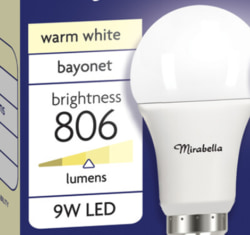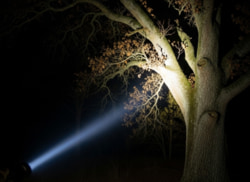Lumen, Lux and Candela
- Lumens measure the total amount of light a source gives off in all directions
- Lux measures how much of that light reaches a surface
- Candela measures how intense the light is in a particular direction
Lumens
Lumens tell us the total amount of light a source (like a bulb or the sun) sends out in all directions. The more lumens, the brighter!
When you see a light bulb rated for a certain number of lumens, it indicates how much light you can expect the bulb to produce, irrespective of direction.

Example: Shopping for Light Bulbs
When we look at a box for a light bulb in a store, it often says something like "800 lumens." This tells us how much light we get if we use that bulb.
Lux
Lux measures how much visible light shines on a surface, like how bright your desk is when you turn on a lamp.
One lux is equal to one lumen per square meter.
It helps to understand how brightly a light will shine over the area at a certain distance from the light source. Lux takes into account the area over which the light is spread and can be used to know if a space has sufficient lighting for it's purpose.

Example: Studying Under a Lamp
When you're reading, lux tells you how much light is actually lighting up your book.
When the lamp is close, the book is brightly lit.
But if the bulb was far away there might not be enough lux for easy reading!
Try It! When you move farther from a lamp, notice how the light gets dimmer on your book. That is because the same number of lumens is now spread over a bigger area, lowering the lux.
Candela
Candela measures the intensity of light in just one direction.

Example: Flashlight
A flashlight with high candela can light up an object far away, but maybe not illuminate things nearby.
That's because its light is concentrated in a narrow beam.

what a solid angle looks like
in geometry
Candela is measured over a solid angle, like a 3D cone of space that captures where the light is shining.
This helps manufacturers design things like headlights, which need to be bright but only in the direction of the road.
Conclusion
Together, lumens, lux, and candela help us make sense of light. We can understand how much light is made, how well a place is lit, and how bright a beam can be.
They help us with lighting design, photography, vision science, and many aspects of engineering and safety standards.
Notice how stadium lights, streetlights, and emergency vehicle lights all use light in different ways. Next time you're outside at night, see if you can spot examples of lumens, lux, and candela in action!